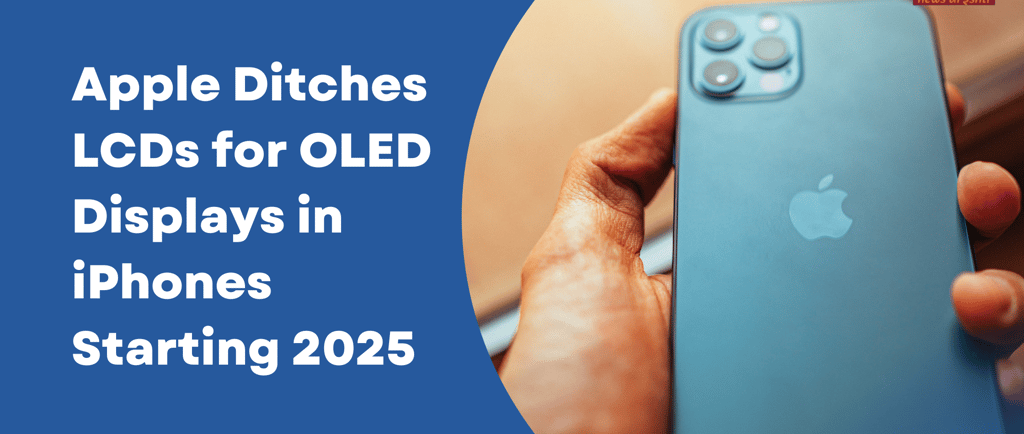Apple to Replace LCDs with OLED Displays in iPhones by 2025
Apple will switch from LCD to OLED displays for iPhones, enhancing visual quality, energy efficiency, and setting a new standard in smartphone technology...
TECHNOLOGY


In a monumental decision that has sent shockwaves through the smartphone industry, tech juggernaut Apple has announced its plans to completely abandon the use of Liquid Crystal Displays (LCDs) in favor of the cutting-edge OLED technology for its iconic Apple iPhones, starting in 2025. This bold and strategic shift marks a significant milestone in Apple's relentless pursuit of innovation and sets the stage for a new era of visual experiences for iPhone users worldwide.
Statistics from industry analyses provide a compelling narrative. According to a report by Counterpoint Research, the global smartphone OLED panel market is projected to reach a staggering 663 million units by 2026, signifying a sharp upward trajectory in demand for OLED displays. This swift uptake is indicative of consumer preference for the unparalleled visual performance and energy efficiency offered by OLED technology, driving Apple and iPhone displays to pivot their strategy decisively.
While the move represents a thrilling leap forward in display technology, it is essential to consider diverse perspectives in light of this monumental decision. Proponents of OLED herald its ability to offer deeper blacks, vibrant colors, and enhanced energy efficiency compared to traditional LCD panels, affirming the potential for a superior and more sustainable user experience with Apple iPhones.
However, it is crucial to acknowledge the potential challenges that come with this transition, including cost implications and environmental considerations. While OLED panels generally command higher production costs than LCD screens, economies of scale and advancements in manufacturing processes are anticipated to gradually mitigate this impact. Furthermore, the manufacturing of OLED displays requires the utilization of rare earth elements and involves intricate chemical processes, prompting concerns about its environmental footprint. Nevertheless, ongoing efforts to develop sustainable materials and recycling techniques are aimed at minimizing the ecological impact of OLED production.
Apple's decision to embrace OLED technology for its Apple iPhones underscores its unwavering commitment to delivering advanced and transformative user experiences. By making this pivotal switch, Apple is poised to set a new benchmark for visual excellence in the smartphone realm, offering users an immersive and energy-efficient display ecosystem that pushes the boundaries of technological innovation.
The transition from LCD to OLED represents a watershed moment not only for Apple and iPhone enthusiasts but also for the wider smartphone industry, signifying a paradigm shift that is certain to reverberate across the market. As with any radical change, the decision carries implications that span industry dynamics, user experiences, and environmental stewardship, underscoring the far-reaching impact of Apple's strategic pivot in display technology.
In conclusion, Apple's resolute departure from LCDs in favor of OLED displays for Apple iPhones marks an unprecedented move that is poised to reshape the future of smartphone visual experiences. With its enduring commitment to pushing boundaries and prioritizing user experiences, Apple is trailblazing a new path that holds the promise of redefining the very essence of display technology.
